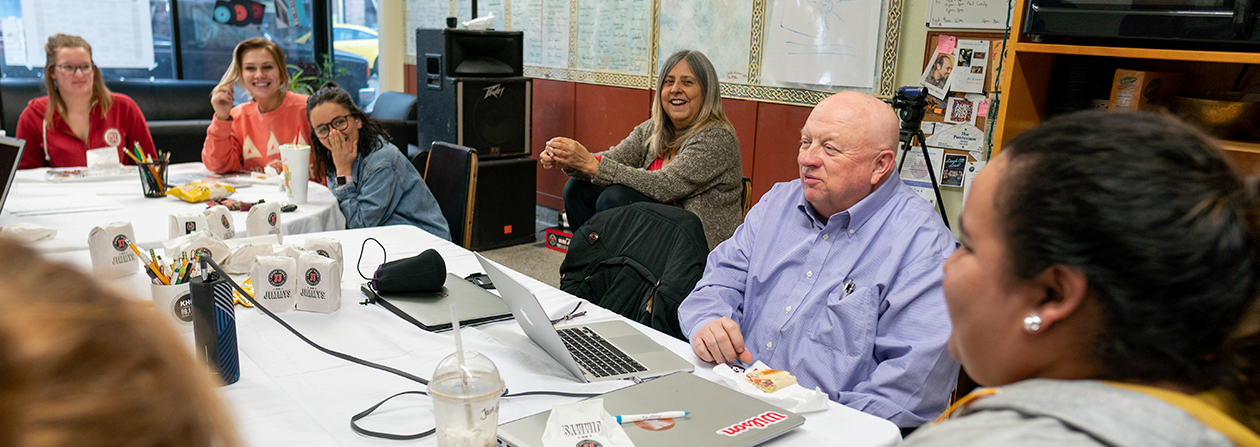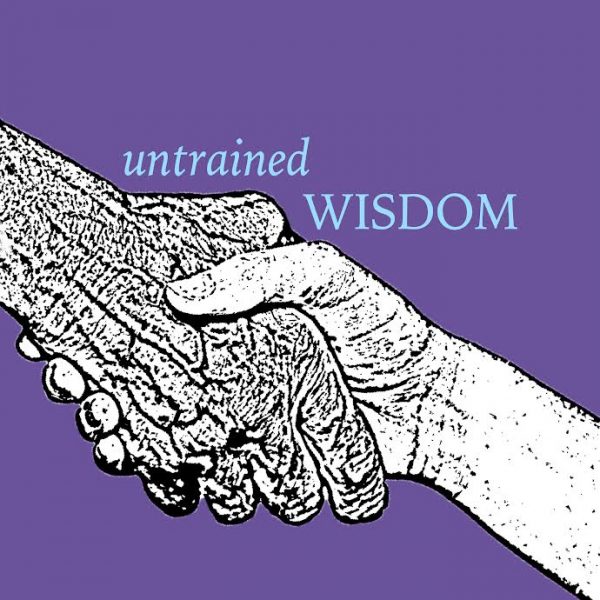
By Emma McDowell
In 2018, 44% of Americans said they had listened to a podcast. Three years later, in 2021, that percentage rose to 58% and is expected to continue to grow. With two million podcasts available, the potential for this popular medium is endless.
For the fourth time, Greenlee offered a short-course intensive audio lab focused on creating a podcast this fall. Taught by Gary Sawyer and Ursula Rudenberg, this class aims to walk students through the process of making a podcast. For Rudenberg, she hopes students walk away with the confidence to conceptualize and create a podcast from beginning to end.
Podcasts have been around since the 2000s, first starting as audio blogs downloaded onto iPods, hence the term podcasting. However, they didn’t explode into the mainstream until mid-2010. One-third of podcast episodes have been created since June of 2018. That’s nearly 10 million.
Sawyer believes the convenience of listening and creating a podcast has been a major driver in its rise in popularity.
“It’s easy to deliver, the entry to get into isn’t expensive, and people have lives that they want to do something and listen to something and be entertained. Unlike radio, if you’re listening to a newscast and you want to stop, well they keep going, but a podcast you can get done cooking dinner and pause it and finish it tomorrow,” he said.
Additionally, the ability to multitask is a major draw for listeners. About 22% of people listen to podcasts while driving, and eight percent listen while working out.
Lexie Schroeder, a junior in animal science, said, “I like to listen to true crime podcasts on long drives. They keep me entertained and make the drive go by faster.”
Students who aren’t interested in podcasting may be wondering why they should care about this powerhouse platform. There are countless ways podcasting can be relevant in students’ future careers. Many newspapers have daily podcasts to catch listeners up on the news and world events. Companies like Trader Joe’s and Shopify created branded podcasts to build connections with their consumer base. Podcast advertising is projected to be a billion-dollar business by the end of 2021. It’s fair to say that any journalism, public relations or advertising student can benefit from learning more about the podcasting industry.

However, podcasting isn’t as easy as pressing a record button and talking. Shuva Rahim, a 1998 journalism and mass communication alumna, is the producer and host of Untrained Wisdom, a podcast focused on reframing what it means to become older. Rahim produces the podcast as a passion project on top of her full-time job. She cites time as one of her greatest hurdles in creating new episodes.
In May 2021, Rahim’s podcast hit its one-year anniversary, an accomplishment many other podcasters fail to meet. About 26% of the two million podcasts available only produced one episode, and 44% have three or fewer episodes. While not every podcast needs to be a never-ending stream of content, these statistics show that many people lack the drive to commit to podcasting.
“People get excited about podcasts, and they have a great idea and get started, but then it dies down. A lot of podcasts die down before they get to their first year. It might be because they ran out of material or that desire wasn’t there. One of the biggest things I did was create a schedule for myself and really committed to that schedule,” said Rahim.
Like any other content platform, podcasting is an art that can be honed to create a quality product. With this short course intensive, students have the opportunity to explore this world and potentially create their own podcast series. This opportunity isn’t limited to students taking the class. Iowa State’s library offers equipment resources for those interested in creating their show.